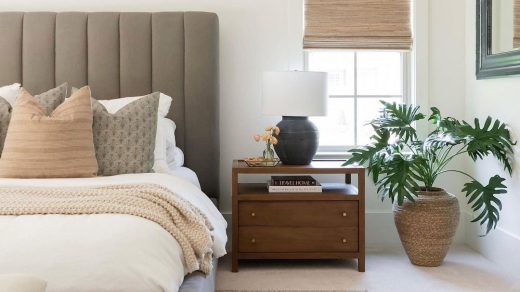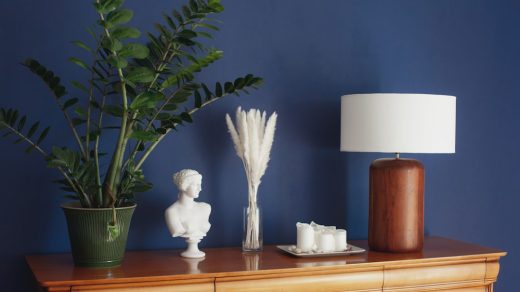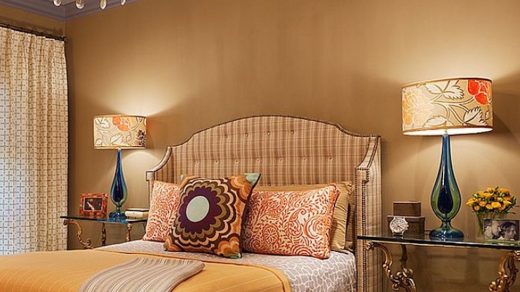Lighting plays a crucial role in creating a comfortable and inviting atmosphere in any room. It not only provides illumination but also sets the mood and enhances the overall decor. While there are various lighting options available, lamps are an essential component of room illumination. They offer versatility, style, and functionality that cannot be matched by other lighting fixtures. uselu
One of the key benefits of using lamps for room illumination is their ability to provide localized lighting. Unlike overhead lights, which can be harsh and create shadows, lamps can be strategically placed to provide soft and warm lighting in specific areas of the room. This allows for a more intimate and cozy ambiance, perfect for relaxing or entertaining guests.
Key Takeaways
- Lamps are essential for room illumination, providing all-around lighting and creating ambiance.
- There are various types of lamps, from table lamps to floor lamps, each with its own unique style and functionality.
- Choosing the right lamp for your room involves considering size, style, and functionality to ensure optimal lighting.
- Lamps can be used for task lighting, providing specific illumination for reading, working, or other activities.
- Energy-efficient lamps can save money and reduce environmental impact, while proper maintenance and care can extend their lifespan and enhance their performance.
Types of Lamps: From Table Lamps to Floor Lamps
There are various types of lamps available, each with its own unique features and benefits. Some of the most common types include table lamps, floor lamps, desk lamps, accent lamps, and torchiere lamps.
Table lamps are perhaps the most popular type of lamp and are commonly used in living rooms, bedrooms, and offices. They come in a wide range of styles and sizes, making it easy to find one that complements your room decor. Table lamps are versatile and can be placed on bedside tables, end tables, or desks to provide localized lighting.
Floor lamps, on the other hand, are taller and provide more general illumination for a room. They are often used in living rooms or larger spaces where overhead lighting may not be sufficient. Floor lamps can be placed in corners or next to seating areas to create a warm and inviting atmosphere.
Desk lamps are specifically designed for task lighting and are commonly used in home offices or study areas. They provide focused lighting for reading, writing, or working on a computer. Desk lamps often have adjustable arms or shades to direct light exactly where it is needed.
Accent lamps are smaller in size and are used to highlight specific areas or objects in a room. They can be placed on shelves, mantels, or side tables to add a decorative touch and create a cozy ambiance.
Torchiere lamps are tall and provide upward lighting, which can help to brighten up a room and create a sense of spaciousness. They are often used in living rooms or bedrooms to provide ambient lighting.
Choosing the Right Lamp for Your Room: Size, Style, and Functionality
When choosing a lamp for your room, there are several factors to consider. First and foremost, you need to determine the size of the lamp that will best fit the space. A lamp that is too small may not provide enough light, while a lamp that is too large may overpower the room. Consider the height and width of the lamp, as well as the scale of the furniture and other decor in the room.
In addition to size, you should also consider the style of the lamp. It should complement the overall decor of the room and enhance its aesthetic appeal. Whether your room has a modern, traditional, or eclectic style, there are lamps available in various designs and finishes to suit your taste.
Functionality is another important factor to consider when choosing a lamp. Think about how you will be using the lamp and what type of lighting you need. If you need task lighting for reading or working, a desk lamp with an adjustable arm may be the best choice. If you need general illumination for a larger space, a floor lamp or torchiere lamp may be more suitable.
Illuminating Every Corner: How Lamps Provide All-Around Room Illumination
| Room Size | Number of Lamps | Wattage per Lamp | Total Wattage | Light Output (Lumens) |
|---|---|---|---|---|
| Small (less than 100 sq. ft.) | 1-2 | 40-60 | 40-120 | 450-800 |
| Medium (100-200 sq. ft.) | 2-3 | 60-100 | 120-300 | 800-1600 |
| Large (more than 200 sq. ft.) | 3-4 | 100-150 | 300-600 | 1600-3000 |
One of the key benefits of using lamps for room illumination is their ability to provide all-around lighting. Unlike overhead lights, which can create shadows and uneven lighting, lamps can be strategically placed to fill in any dark corners or areas that may not be adequately illuminated.
By placing lamps in different areas of the room, you can create a balanced and well-lit space. For example, placing a table lamp on a side table next to a sofa can provide localized lighting for reading or relaxing. Adding a floor lamp in a corner can help to brighten up the entire room and create a warm and inviting atmosphere.
Strategically placing lamps can also help to highlight specific areas or objects in the room. For example, placing an accent lamp on a shelf or mantel can draw attention to a piece of artwork or a decorative item. This not only adds visual interest but also creates depth and dimension in the room.
Mood Lighting: Creating Ambiance with Lamps
In addition to providing general illumination, lamps can also be used to create different moods in a room. The type of lamp and the color temperature of the light bulb can greatly impact the ambiance of a space.
For a cozy and intimate atmosphere, consider using lamps with warm-colored light bulbs. These can create a soft and inviting glow that is perfect for relaxing or entertaining guests. On the other hand, if you want to create a bright and energetic ambiance, opt for lamps with cool-colored light bulbs. These can help to create a more vibrant and lively atmosphere.
The style of the lamp can also contribute to the overall mood of the room. For example, a sleek and modern lamp can create a contemporary and sophisticated ambiance, while a vintage-inspired lamp can add a touch of nostalgia and charm.
Task Lighting: Using Lamps for Specific Purposes

Lamps are not only great for providing general illumination but also for specific tasks. Whether you need focused lighting for reading, working, or doing crafts, there is a lamp available to suit your needs.
Desk lamps are specifically designed for task lighting and are commonly used in home offices or study areas. They provide focused lighting for reading, writing, or working on a computer. Desk lamps often have adjustable arms or shades to direct light exactly where it is needed.
Table lamps can also be used for task lighting, especially if they have adjustable arms or shades. They can be placed on bedside tables or end tables to provide localized lighting for reading or other activities.
When choosing a lamp for task lighting, consider the type of task you will be performing and the level of brightness you need. For example, if you need bright and focused lighting for detailed work, a lamp with a higher wattage bulb may be necessary. On the other hand, if you need softer and more diffused lighting for reading or relaxing, a lamp with a lower wattage bulb may be more suitable.
Energy Efficiency: How to Choose Lamps that Save Energy and Money
In today’s environmentally conscious world, energy efficiency is an important consideration when choosing any type of lighting. Fortunately, there are many energy-efficient lamps available that can help to reduce energy consumption and save money on electricity bills.
One of the most energy-efficient options is LED lamps. LED stands for Light Emitting Diode, and these lamps use significantly less energy than traditional incandescent or fluorescent bulbs. LED lamps also have a longer lifespan, which means they need to be replaced less frequently.
When choosing an energy-efficient lamp, look for the ENERGY STAR label. This label indicates that the lamp meets strict energy efficiency guidelines set by the U.S. Environmental Protection Agency (EPA). ENERGY STAR lamps are designed to use less energy without sacrificing performance or quality.
Another way to save energy and money is by using dimmable lamps. Dimming the lights can help to reduce energy consumption and create a more relaxed and intimate atmosphere. Look for lamps that are compatible with dimmer switches or have built-in dimming capabilities.
Maintenance and Care: Keeping Your Lamps in Good Condition
To ensure that your lamps continue to provide optimal lighting and enhance your room decor, it is important to properly maintain and care for them. Here are some tips for keeping your lamps in good condition:
– Regularly dust the lampshade and base with a soft cloth or feather duster to remove any dirt or debris.
– Avoid using harsh chemicals or abrasive cleaners on the lamp, as they can damage the finish or material.
– If the lampshade is fabric or paper, avoid getting it wet as this can cause staining or warping. Instead, use a fabric or paper cleaner to spot clean any stains.
– Check the light bulb regularly and replace it if it is burnt out or flickering. Be sure to turn off the lamp and unplug it before replacing the bulb.
– If the lamp has a cord, check it periodically for any fraying or damage. If you notice any issues, have the cord replaced by a professional electrician.
– If the lamp has a metal or glass base, use a glass cleaner or metal polish to keep it looking shiny and new.
By following these maintenance tips, you can ensure that your lamps continue to provide optimal lighting and enhance your room decor for years to come.
Decorating with Lamps: Using Lamps to Enhance Your Room Decor
Lamps not only provide illumination but also serve as decorative accents in a room. They can enhance the overall decor and add a touch of style and personality. Here are some tips for decorating with lamps:
– Choose lamps that complement the style of the room. For example, if your room has a modern aesthetic, opt for sleek and minimalist lamps. If your room has a traditional or vintage-inspired decor, choose lamps with ornate details or antique finishes.
– Consider the color scheme of the room when choosing lamps. If you want the lamps to blend in with the decor, choose ones that are similar in color to the walls or furniture. If you want the lamps to stand out, choose ones that are a contrasting color.
– Use lamps to create visual interest and balance in the room. For example, if you have a large piece of furniture on one side of the room, place a lamp on the opposite side to create balance. If you have a neutral color palette, use lamps with bold or patterned lampshades to add visual interest.
– Consider the height and scale of the lamps in relation to the furniture and other decor in the room. The lamps should be proportionate to the size of the furniture and not overpower or dwarf it.
– Use lamps to highlight specific areas or objects in the room. For example, place an accent lamp on a shelf or mantel to draw attention to a piece of artwork or a decorative item.
By considering these tips, you can use lamps to enhance your room decor and create a cohesive and visually appealing space.
The Importance of Lamps in Creating a Comfortable and Well-Lit Home
In conclusion, lamps are essential for room illumination as they provide versatility, style, and functionality. They offer localized lighting, which can create a cozy and inviting atmosphere in any room. Lamps come in various types, including table lamps, floor lamps, desk lamps, accent lamps, and torchiere lamps, each with its own unique features and benefits.
When choosing a lamp for your room, it is important to consider factors such as size, style, and functionality. By choosing the right lamp that complements the room’s decor and meets your lighting needs, you can create a comfortable and well-lit space.
Lamps provide all-around room illumination by strategically placing them in different areas of the room. They can also be used to create different moods and provide task lighting for specific purposes. Energy-efficient lamps are available that can help to reduce energy consumption and save money on electricity bills.
To keep your lamps in good condition, it is important to properly maintain and care for them. Regular dusting and cleaning, as well as checking the light bulb and cord, can help to ensure that your lamps continue to provide optimal lighting.
Lastly, lamps can be used to enhance room decor and add a touch of style and personality. By choosing lamps that complement the room’s style and using them to create visual interest and balance, you can create a cohesive and visually appealing space.
In conclusion, lamps are not just functional lighting fixtures but also important elements in creating a comfortable and well-lit home. By choosing the right lamp for your room’s needs and style, you can enhance the overall ambiance and create a space that is inviting and visually appealing.




